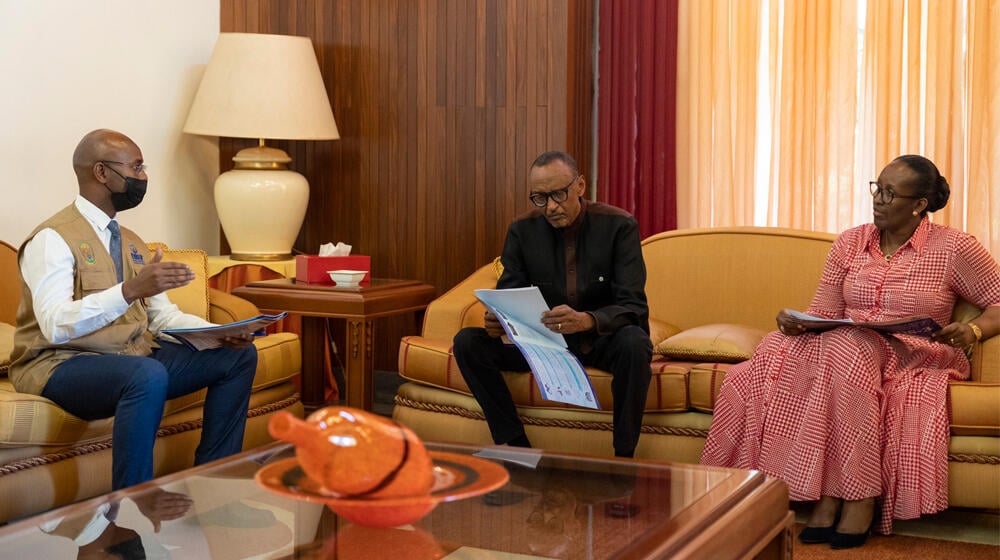Today, with major demographic shifts occurring and increased attention on international development cooperation, accurate and timely data are more important than ever. As the world has the prospect of reaching 8 billion people by the end of this year, Rwanda is projected to reach 13 million people by 2022.
“In Rwanda, statistics show that this year (2022) Rwandans will reach around thirteen million, and twenty-one million in 2050.” Said Yussuf Murangwa, Director General of the National Institute of Statistics of Rwanda, in his statement during the celebration of World Population Day.
Achieving a demographic dividend requires that each country understand the size and distribution of its population, its current and projected age structure, and the pace of population growth in order to undertake effective planning and implementation of socio-economic and development initiatives.
With the support from UNFPA Rwanda and other partners, the National Institute of Statistics of Rwanda (NISR) will conduct the 5th Population and Housing census from 16-30 August 2022, to update data on core demographic, social, and economic indicators to inform the formulation, implementation, monitoring, and evaluation of national and international development plans and programs that the country has committed on, particularly the National Strategy for Transformation 1 (NST1), Vision 2050, SDGS.
The UN recommends the use of modern technologies in various census operations in the 2020 round of population and housing censuses. Rwanda will be the first to use mobile technologies with phones produced locally and census dashboards formatted ex-factory with technical support from the Africa Center for Statistics (UNECA).
In adhering to modern technology in census, the NSIR Director General has indicated: “We will use technology in census operations in replacement of paper questionnaires, to reduce the time between data collection and publication of census results. I urge the public to help enumerators by complying with their rendezvous and giving them accurate information.”
United Nations Agency for Sexual and Reproductive Health (UNFPA) uses its comparative advantages to support the government of Rwanda to generate, analyze and use data on population dynamics to inform planning, policy formulation, implementation, and monitoring of interventions in development and humanitarian settings. UNFPA Disaggregated data are crucial to monitor the progress to achieving Sustainable Development goals.
“It is within the UNFPA mandate and mission, to support countries in using population data for policies and programs,” says Kwabena Asante-Ntiamoah, UNFPA Representative “UNFPA appreciates the work and progress done by NISR, in the preparation of the 5th Population and Housing Census 2022. We hope to see reliable and timely updated population data”
Rwanda conducts a population census every decade to update the demographic, social, economic, and cultural characteristics of the population. The current census will be the fifth to be conducted in Rwanda.
The first census was conducted in 1978, which at that time put the Rwandan population at about 4.8 million. The second, conducted in 1991, witnessed the population increase to 7.1 million. The population growth rate between 1978 and 1991 was 3.1 percent.
The third census, in 2002, indicated that the population had grown to 8.1 million. The fourth census conducted in 2021 was carried out in two weeks for the actual enumeration of the population standing at 10.5 million.
According to NISR, the current projections show that Rwanda's population is estimated to continue growing for the rest of the century and reach 21 million by 2050, and 30 million in 2076. Around 70% are youth with 27.6% between the ages of 16 and 30, which underlines the importance for Rwanda to continue to invest in harnessing the demographic dividend.


